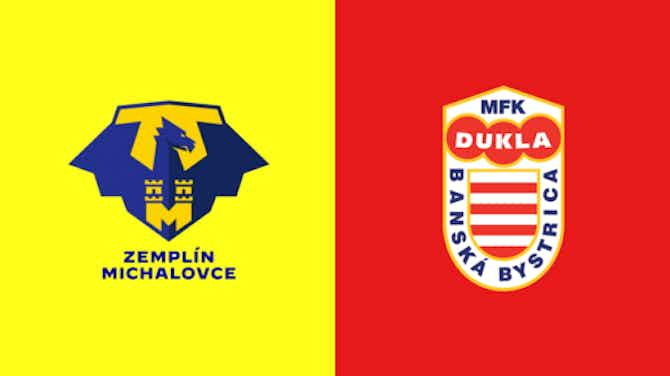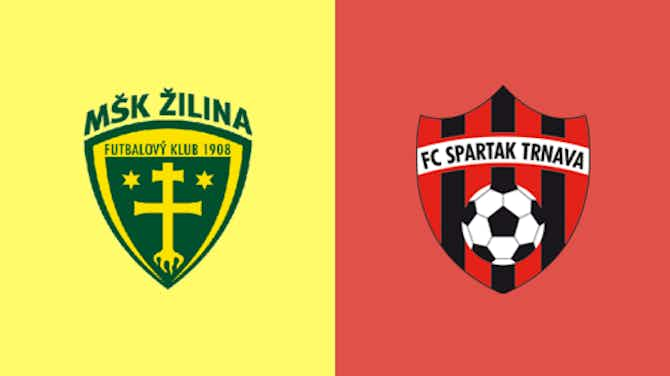La Liga Analysis
·22 September 2020
La Liga 2020/2021: Real Betis vs Real Valladolid – tactical analysis

La Liga Analysis
·22 September 2020

After the remarkable performance in their first game of the season game against Real Sociedad, Real Valladolid travelled to Real Betis. Real Betis came off the back of a late away goal at Deportivo Alaves which secured them the win in their first game of the 2020/2021 La Liga season.
The match was an end-to-end game with both teams registering decent shots on goal. The game was more of a chaotic game as neither team really established possession. Both teams relied on transitions as methods of chance creation. However, Real Betis were better at controlling transitions and exploiting which led them to their second win of the season against Real Valladolid.
In this tactical analysis, we will give an analysis of the tactics deployed by Real Betis and Real Sociedad in this La Liga matchup.
Real Valladolid’s manager, Sergio, used the same formation as he did against Real Sociedad but made one change to the starting lineup. New signing, Roberto Jimenez, replaced Jordi Masip as the starting goalkeeper. The starting lineup also featured the unchanged backline of Nacho Martinez, Bruno Gonzalez, Joaquin Hernandez and Javi Moyano. The midfield contained the double pivot of Michel and Fede San Emeterio, the wingers Waldo Rubio and Oscar Plano and the attacking midfielder Orellana. Sergi Guardiola leads the attack as the lone forward.
Real Betis manager, the renowned Manuel Pellegrini, used the exact same as Real Sociedad and named an unchanged formation from last week’s win at Alaves. The man in goal was veteran goalkeeper Claudio Bravo. The backline consisted of Alex Moreno, Marc Bartra, Aissa Mandi and Emerson. The midfield contained the double pivot of William Carvalho and Guido Rodriguez, the wingers Sergio Canales and Joaquin, and the attacking midfielder Nabil Fekir. The attack was led by Borja Iglesias.

Real Betis majorly relied on transitions as a method of chance creation. In the settled play, they relied on crosses from full-backs in the final third as Real Valladolid defended deep. In the first phase, they by-passed Real Valladolid’s 4-4-2 press which eventually led to the aforementioned crosses.
As said earlier, transitions were generally Real Betis’ method of creating chances and the most effective as they lead to the penalty for the first and second goal in the first half. Real Betis were able to create transition moments through their intense counter-pressing which is evident in their 8.8 PPDA (passes allowed per defensive action) and bypassing Real Valladolid 4-4-2 press.
Apart from this, the chaotic manner of the game in which they were numerous goal-kicks from both teams goalkeepers which resulted in the numerous long balls. As the known nature of long balls, they are uncontrollable for both teams and result in disjointed or unsettled shapes.
Real Betis were able to capitalize on this chaotic and uncontrollable nature of these balls by using their technicality and physicality. Real Betis were able to win more aerial duels and recover more loose balls more than their opponents.

Real Betis’ transitions were made easier as they had two decent transitional players in Nabil Fekir, William Carvalho, and Sergio Canales. Nabil Fekir and William Carvalho were able to bypass Real Valladolid’s press which their dribbling ability and withstands challenges due to their sheer physicality. Nabil Fekir and William Carvalho engaged in a total of 33 offensive duels and won 14. Excluding Sergi Guardiola, that’s more offensive duels won than the entire Real Valladolid players who featured in this match. The teams’ ability to bypass the press is also shown in the number of dribbles won and the success rate which was 15 and 65% respectively.
Sergio Canales was important in combination play and positioning himself to receive the ball during transitions. Apart from this, his sheer athleticism helped him in progressive carries which opened up shooting opportunities. In all their presence in transitions is shown by the total amount of assisted shots which is 10. Sergio Canales shot assists alone was equal to the shot assist of the entire Real Valladolid team.

Apart from the transitions that resulted from turnovers, Real Betis were able to transition as a result of bypassing Real Betis’ press. Real Betis built-up in a 2-4-4 shape. It was hard at the beginning to bypass the press due to the intensity from Real Betis. As the pressing intensity waned, Real Betis were able to find Willian Carvalho who progressed the ball with impeccable line-breaking passes. This resulted in stretched defensive shape as Real Betis exploited through impeccable in-between the lines play by Borja Iglesias, Nabil Fekir and Sergio Canales.
In the final third settled play, Real Betis exploited the spaces left on the flanks as a result of Real Valladolid’s narrow low-block. Emerson, Angel Moreno and Joaquin provided the width which Real Betis used as an avenue to load in crosses into the box. They were able to exploit these spaces through underlaps, 1v1s and overlaps. All these are shown below in this image.

As the game progressed, Real Betis were able to exploit the spaces and attack better. This was due to the fact that Real Valladolid was chasing the game and kept pressing disjointedly. Real Betis exploited the disjointed press by moving the ball quickly and manipulating them through impeccable dribbles.
Real Valladolid also looked to create their chances through transitions. Apart from transitions, they were also able to create chances in settled play.
As mentioned earlier, the uncontrollable nature of the long balls from goal-kicks and the chaotic manner also benefitted Real Valladolid in creating decent chances of their own. Apart from this, Real Betis capitalized on the numerous throw-ins. They did this by making quick throw-ins which caught Real Betis unawares.
Although, Real Betis made it difficult for Real Valladolid to transition from defence to attack, Real Valladolid still transitioned due to moments of huge gaps and their decent transition tactics.
Real Valladolid looked to make use of the wide areas as major routes from transitions. They preferred to move from one wing to another. Real Valladolid always looked to make switches to the players positioned on the flanks using long balls. Real Valladolid made sure to position at least one or two players on the flanks as a route for progression. This tactic was used to bypass the immediate counter-press of Real Betis. Also, it fastened the pace of the transition and allowed Real Betis to capitalise on the numerical advantage.

In situations where switches weren’t possible or favourable, Real Valladolid transitioned through the ball near flank through combination plays which usually ended up in crosses. Real Valladolid’s combination plays were relatively easy as they had fast and technical forwards who moved the ball with easier. Sergi Guardiola and Orellana were focal points in Real Valladolid’s transitional attacks.

In settled attacks, Real Valladolid majorly looked to play through overloads. In the later parts of the game, Real Valladolid built up with somewhat of a three which gave them numerical superiority over Real Betis first line of pressure. As they bypassed the first line of pressure, they created overloads of on the left which resulted in crossing opportunities. In scenarios where they couldn’t play through the overload, they switched to the underloaded side through a long ball and attack from that side.

Real Betis defended in a settled defensive shape of 4-4-2 and pressed high in also a 4-4-2 shape. In transitions, they counter pressed or recovered to create a defensive overload and defend in a block.
In the high press, Real Betis aim was to force Real Valladolid to play long balls. They did this by directing the short play build-up to the flanks. As the build-up reaches the flanks, they intensified their press which forced Real Valladolid long. As the game progressed, they stopped pressing high due to low energy levels and Real Valladolid opting for goal kicks.

In the settled 4-4-2 defensive shape, Real Valladolid looked to defend the central areas and wide areas. Although, the central areas were easier to defend as they weren’t any significant in-between-the-lines presence. Nonetheless, they still defended the central areas. However, it was shaky in moments where energy levels were low.

The 4-4-2 mid-block comprised of Borja Iglesias and Nabil Fekir who acted as the first line of pressure, the pressure line of Sergio Canales, William Carvalho, Guido Rodriguez and Joaquin. The last line of pressure consisted of defenders. The first line of pressure looked to block the passing lane to the central midfielders.
In wide areas, they look to remain compact and defend the against overloads of Real Valladolid. They shuttled their block to the ball-near area and pressed the ball-carrier who either made a return pass or switched to the underloaded side. In defending against the underloaded side, the ball-far winger positions himself a little bit deep. This helps him to gain better access to the ball-far opponent in case there is a switch.
In transitions, they conducted a ball-oriented counter-press which stifled the offensive transitions of Real Betis. Real Betis deployed around three players who press the ball immediately it lost the ball. This intense pressure forced the opposition into errors or back passes which protected the central areas and allowed other players to recover.
In all, Real Betis defended well, however, due to the dwindling energy levels they started getting picked out. Nonetheless, they were able to control spaces and limit Real Valladolid to low xG shots.
Real Betis did well in handling and controlling transitions better than Valladolid. Due to their intensity and compactness in midfield, they were able to limit Valladolid to few chances. Their offensive transitions were also good as they maximized the capacity of their good transitional players. At the stage where the energy levels where low, good subs were made to main the intensity of the offensive transitions and keep Real Betis on their toes. It was an impressive performance which they’ll take into their next encounter against reigning La Liga champions Real Madrid.
Real Betis weren’t able to deal with the chaotic environment they created as they weren’t able to recover possession after goal-kicks. Apart from this, they were exploited in transitions as they couldn’t really deal with the transitional force of Real Betis. They’ll be exploited by the likes of Barcelona if they can’t play in a less chaotic manner. Going forward, Real Betis should try to play in more organised play and limit the chaos at which they play.






























































